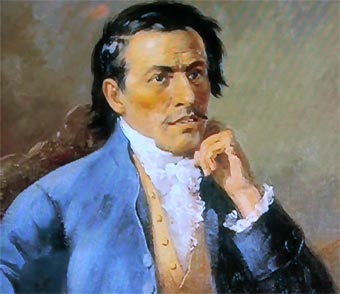Ecuadorians come from many places. Many are of
European heritage, namely Spain, Italy, France, Germany, and Lebanon is you
extend a little further. And there
are many who are of an African heritage as well, about 10% or so. But the majority of people are of
Amerindian descent or some kind of mix of Amerindian and something else. And all of these backgrounds have their
influence on Ecuadorian arts. Regardless of their back ground bright colors are universal.
Quichua peoples in the Sierra region of the country
are well known for their paintings on sheepskin canvases. The people of Tigua were especially
known for this. They were also
known for their highly-decorated painted masks and drums. Their painting styles are characterized
by their bright colors and geometric shapes, although commonly painted scenes
include the countryside, everyday life, festivals, religious themes. Common
landmarks are also notable objects portrayed in art, such as the volcano
Cotopaxi, which is one of the highest active volcanoes in the world. Nowadays, you can find their work all
over, and especially in the touristy areas.
Literature in Ecuador is mainly written in
Spanish. One of the early writers
to emerge from colonial Quito is Eugenio Espejo. People found his works inspiring when it came to the fight
for independence from Spain. Horacio
Hidrovo Velásquez from Manabí is another novelist and poet whose works have
been made into a few films.
 |
| Eugenio Espejo |
However, there is one city in central Ecuador,
which is the home to three writers: the city of San Juan de Ambato. It became known as the “City of Three
Juanes.” Juan Montalvo (prominent
outspoken liberal, at odds with the government so much, he was exiled several
times. He founded several literary and political magazines, and was an enemy of
writer Juan León Mera), Juan León Mera (essayist, politician, painter, he was
famous for his novel Cumandá and for
writing the words to the Ecuadorian National Hymn), and Juan Benigno Vela (received
his law degree, was friends with Simón Bolívar and Juan Montalvo. He was quite active in the political
scene, but also wrote for political newspapers, as well as wrote the
constitution and several other public law documents. He died blind and deaf.).
Up next: music and dance



No comments:
Post a Comment